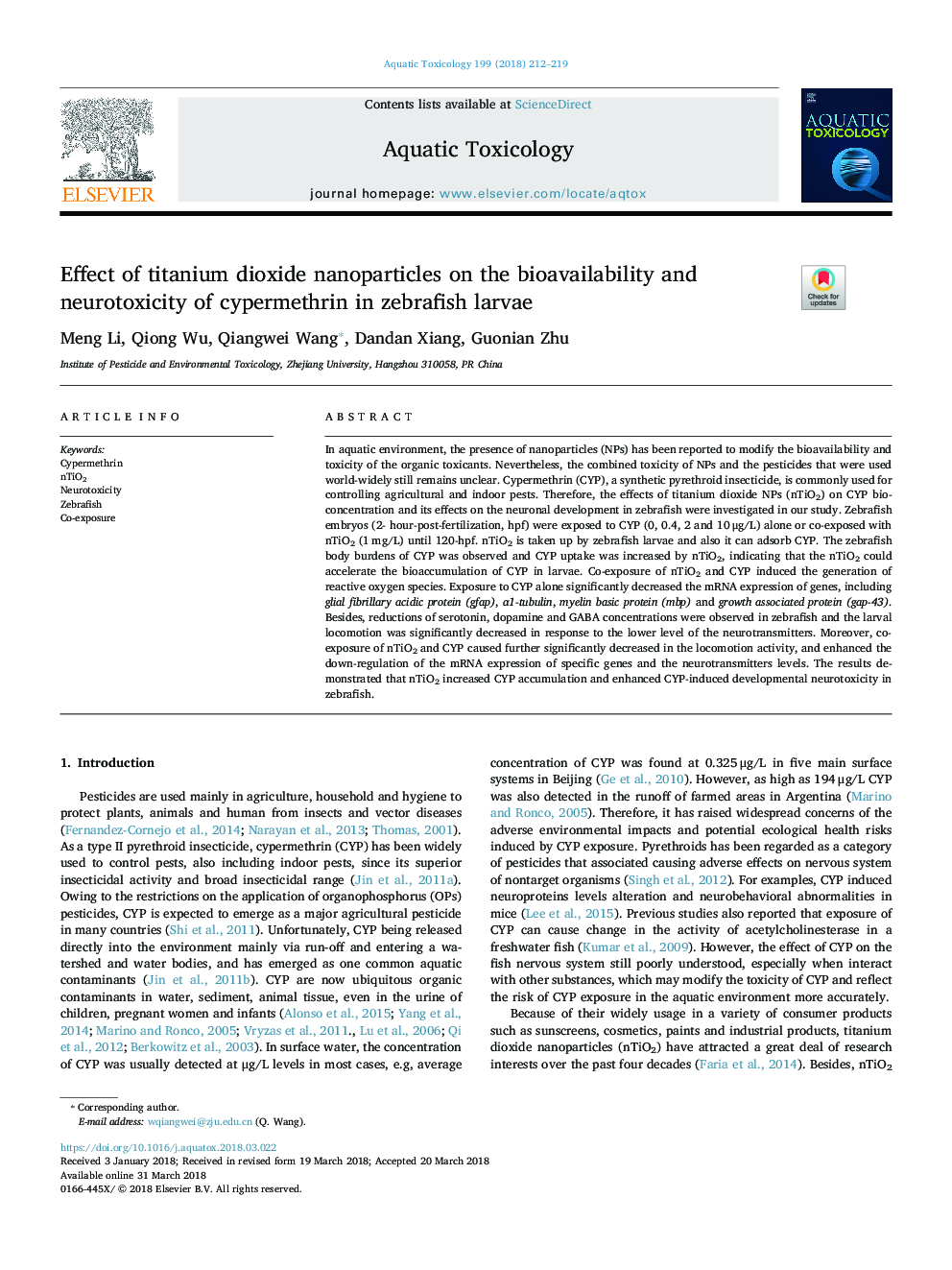| Article ID | Journal | Published Year | Pages | File Type |
|---|---|---|---|---|
| 8883753 | Aquatic Toxicology | 2018 | 8 Pages |
Abstract
In aquatic environment, the presence of nanoparticles (NPs) has been reported to modify the bioavailability and toxicity of the organic toxicants. Nevertheless, the combined toxicity of NPs and the pesticides that were used world-widely still remains unclear. Cypermethrin (CYP), a synthetic pyrethroid insecticide, is commonly used for controlling agricultural and indoor pests. Therefore, the effects of titanium dioxide NPs (nTiO2) on CYP bioconcentration and its effects on the neuronal development in zebrafish were investigated in our study. Zebrafish embryos (2- hour-post-fertilization, hpf) were exposed to CYP (0, 0.4, 2 and 10â¯Î¼g/L) alone or co-exposed with nTiO2 (1â¯mg/L) until 120-hpf. nTiO2 is taken up by zebrafish larvae and also it can adsorb CYP. The zebrafish body burdens of CYP was observed and CYP uptake was increased by nTiO2, indicating that the nTiO2 could accelerate the bioaccumulation of CYP in larvae. Co-exposure of nTiO2 and CYP induced the generation of reactive oxygen species. Exposure to CYP alone significantly decreased the mRNA expression of genes, including glial fibrillary acidic protein (gfap), α1-tubulin, myelin basic protein (mbp) and growth associated protein (gap-43). Besides, reductions of serotonin, dopamine and GABA concentrations were observed in zebrafish and the larval locomotion was significantly decreased in response to the lower level of the neurotransmitters. Moreover, co-exposure of nTiO2 and CYP caused further significantly decreased in the locomotion activity, and enhanced the down-regulation of the mRNA expression of specific genes and the neurotransmitters levels. The results demonstrated that nTiO2 increased CYP accumulation and enhanced CYP-induced developmental neurotoxicity in zebrafish.
Related Topics
Life Sciences
Agricultural and Biological Sciences
Aquatic Science
Authors
Meng Li, Qiong Wu, Qiangwei Wang, Dandan Xiang, Guonian Zhu,
